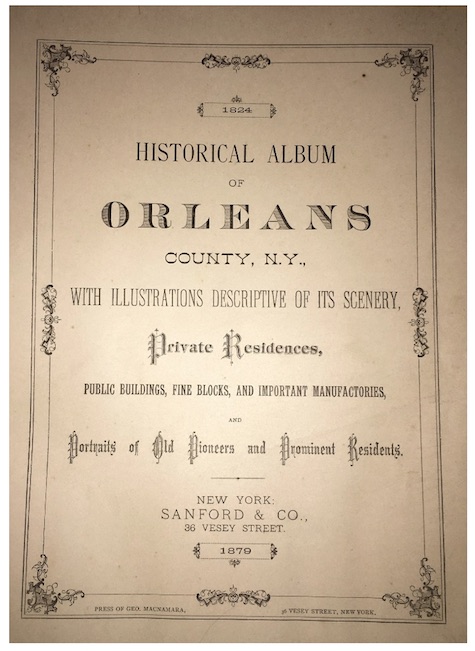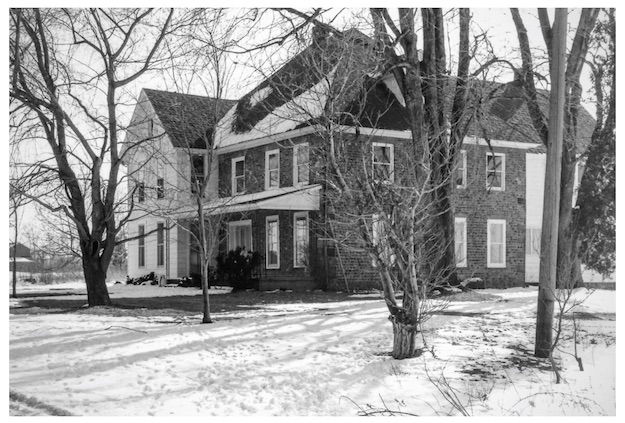Historic Childs: Bear Trap from early 1800s among treasured Cobblestone Museum artifacts
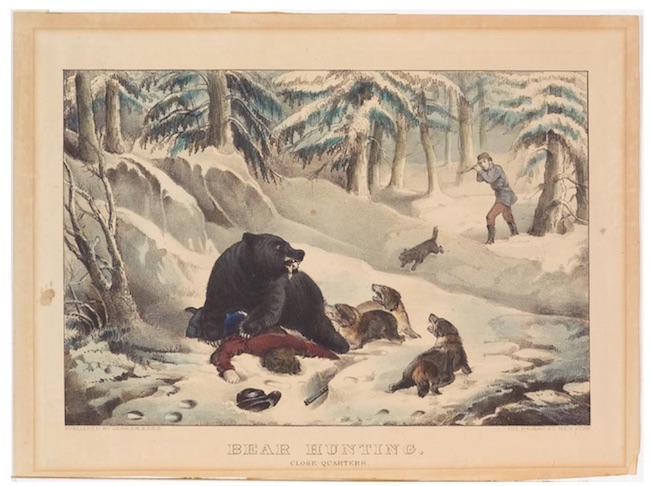
Bear Hunting, Currier & Ives, undated
By Doug Farley, Cobblestone Museum Director – Vol. 3 No. 5
GAINES – The Hamlet of Childs is probably one of a very few locations in Orleans County where one can still find a bear trap from the early 1800s.
At one time, a necessary evil in pioneer days, bear traps have now become a rarity in the modern landscape of Orleans County.
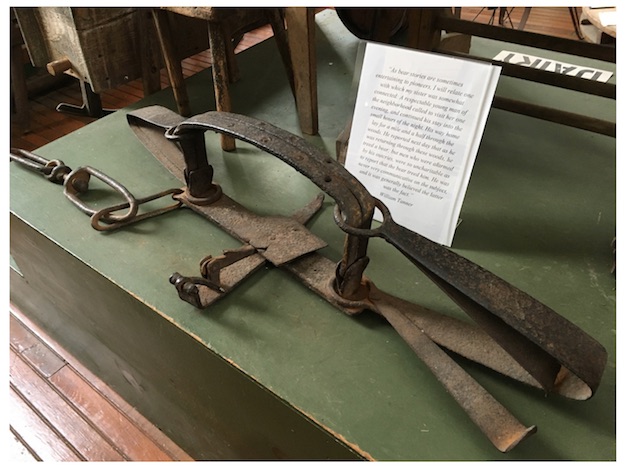
The bear trap at the Cobblestone Museum is about 200 years old.
Since trees were heavily abundant in the “Black North,” Orleans County provided a perfect sanctuary for animals. Wolves and bears were numerous in the area and often posed a safety problem for the settlers.
In order to catch them, traps were often used. Bear traps were made by blacksmiths from the area. Food was placed inside the trap, under the pedal, and the bear would sniff it, go for the food and then would get caught.
The settler or farmer would check the trap and shoot the bear if caught, as the trap would not kill the bear. Bear traps were set to protect livestock: chickens, pigs, and cows, and set to protect the farmer, his family, and their food supply.
The bear trap in question is now a treasured artifact at the Cobblestone Museum. The story of how this pioneer necessity survived the ages will be told, again, here.
The first known written telling of this story took place in 1879 in the “Historical Album of Orleans County, NY.” The “Historical Album” was written to record and commemorate the first 50 years of Orleans County History. Our bear story was contained therein, and dates to the early 1800s. So, to “stick with the facts,” we’ve quoted it here verbatim:
“Nearly every pioneer has his “bear stories.” Were all these to be repeated here they would be like Mark Twain’s misfortunes, “somewhat monotonous.” One, however, may be related: Some thirty years since, Mr. George Batchellor, of South Barre, went some distance into Tonawanda swamp, with a neighbor, to assist him in bringing out a bear which he had killed.
“On his way the nails in his boot-heel grated upon something which gave a metallic sound. On examination he found that some moss had been scraped from what proved to be a large bear-trap. It was lying with its jaws downward, nearly covered with muck, and the roots of trees had grown through the jaws and springs in all directions. One of these, a black-ash root, was nearly as large as a man’s wrist. The trap was but very little corroded.
“Some years afterwards Mr. Batchellor learned from a man who assisted the owner of the trap in his hunt, that 22 years previous to the finding of it, it was set in the usual way, with a clog attached, in the town of Byron, Genesee county; that a bear was caught in it, and that they followed his trail through a light snow 7 or 8 miles to within 80 rods of where the trap was found, and that they here abandoned the pursuit because night was approaching, and the melting of the snow rendered the trail indistinct. Mr. Batchellor has the trap in his possession still…” (1879)
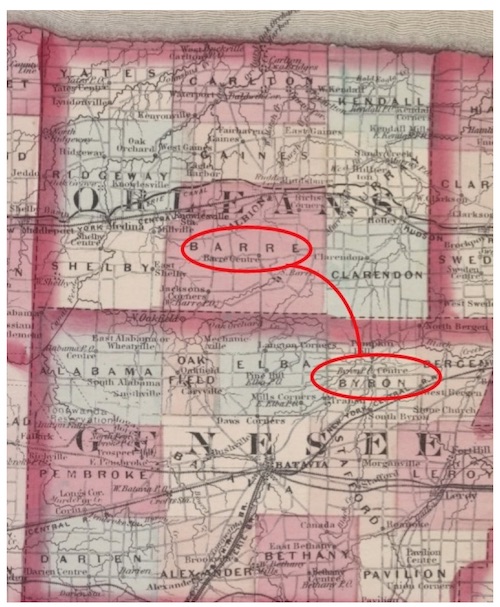
Asher & Adams, New Topographical Atlas, 1871
So there we have it, a nearly 200-year-old story of a missing bear who walked from Byron to Barre with his foot caught in a metal trap. To bring this story more up to date we need to take a look at the Batchellor family and how the trap came to be in the collection of the Cobblestone Museum.
As the “Historical Album” indicated, Mr. George Batchellor lived in the Town of Barre. What the book neglected to report was that George Batchellor was an early resident of the county, and proud owner of a cobblestone home. (As an interesting aside, most of us have heard of the “Six Degrees of Separation” theory that states that anyone on earth is connected to any other person on earth by a chain of no more than six people. I think the degrees of separation between any person and a cobblestone home owner is actually much smaller.)
The Batchellor cobblestone home, located on Old Oak Orchard Road, was built in the 1830s by Ogden Sears and his wife Betsey (Harding) Sears. Mr. Sears was a cooper by trade in Connecticut before coming to Barre, though once there, he worked as a farmer. To build his substantial stone residence, Sears picked up the stone on his own land, burned the lime used in erecting it, made the plaster and mortar and carried it to the workmen in a sap-bucket. The beautiful cobblestone house was constructed using glacial stones (fieldstones) of various sizes and red sandstone quoins.
The Sear’s daughter, Betsey, married the aforementioned George Batchellor, and the newlywed couple lived happily ever after in the Sears cobblestone home (complete with bear trap) and lived out their lives there.
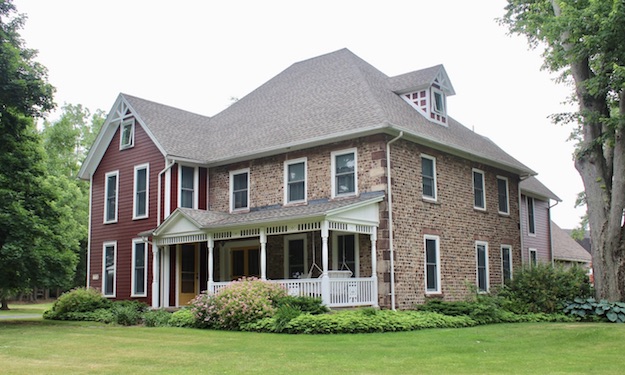
Photo courtesy Richard Palmer, 5306 Oak Orchard Rd., Barre
The home passed down through several generations of the Batchellor family and is now the residence of Jack and Debby Batchellor, proud Patron Members of the Cobblestone Society & Museum. Jack’s family has lived in the home for 7 generations, nearly 200 years. He is probably the only man who lives in a cobblestone home that was built by his great-great-great grandfather.
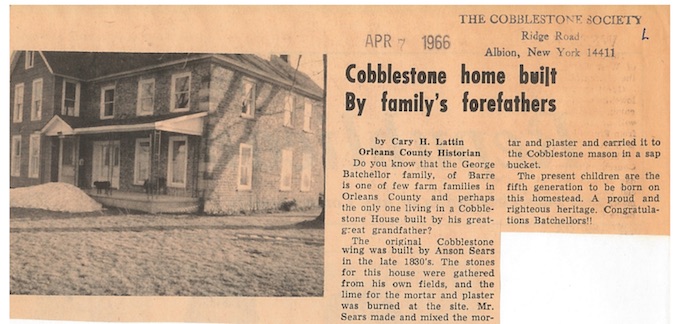
Published 1966, Cary Lattin
In more recent times, the Batchellor family decided to put the famed bear trap into the public domain so it could be preserved and enjoyed for posterity by a larger audience. Its first home was the Buffalo Historical Society Museum. But later, Barre Town Historian, Helen Mathes, actively lobbied to have the bear trap transferred to the Cobblestone Museum where it would be closer to its original home. The donation took place in the 1970s.
Fast forward to 1979, and Former Cobblestone Museum Director, Bill Lattin, remembers when artifacts were being placed in Farmers Hall for public display. The bear trap was among the valued artifacts that found their new home within those walls.
At that time, Mickey Burroughs and Mike Kilborn had summer jobs as interns at the Museum. While examining the bear trap, curiosity got the better of them, and they requested permission to set the trap and test it out. Bill Lattin agreed as long as the experiment was undertaken under his watchful eye.
So, the trap was set, and one thing led to another, and the duo decided they would like to spring the trap. Bill selected a suitable old broom stick, which quickly became kindling when the powerful jaws of the bear trap clamped shut!



























